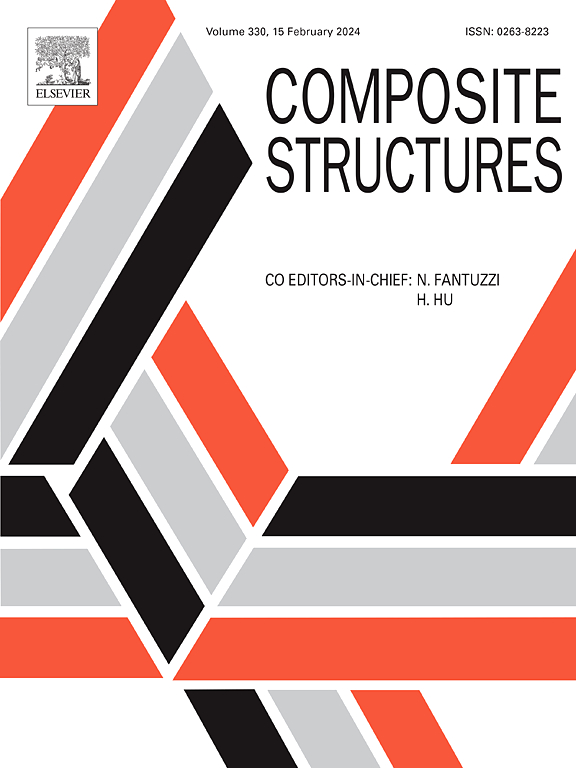3D printed bistable composite lattice shells with tailorable coiled geometries
IF 6.3
2区 材料科学
Q1 MATERIALS SCIENCE, COMPOSITES
引用次数: 0
Abstract
This investigation presents, to the authors’ best knowledge, the first 3D printed continuous fiber-reinforced polymer composite deployable booms. The precise material placement capabilities of the fused filament fabrication (FFF) process are leveraged to produce cylindrical bistable slit tube booms with lattice architectures. The influences of fiber angles, lattice density, and initial shell curvature on the existence and form of stable coiled configurations as well as flexural rigidity properties are investigated. A computational procedure for automatically generating finite element models directly from material deposition paths is presented, with predicted shell behaviors showing strong agreement with experimental results using both homogenization and full-scale modeling approaches. Lattice shell architectures are revealed to exhibit higher flexural rigidity properties than continuum architectures on an equal-mass basis. Finally, bistable slit tube booms that can coil into unique stable configurations via the tailoring of material deposition paths are demonstrated.
3D打印双稳态复合晶格壳,具有可定制的卷曲几何形状
据作者所知,这项研究提出了第一个3D打印连续纤维增强聚合物复合材料可展开吊杆。利用熔丝制造(FFF)工艺的精确材料放置能力来生产具有晶格结构的圆柱形双稳态狭缝管悬臂。研究了纤维角、晶格密度和初始壳曲率对稳定盘绕结构的存在形式和抗弯刚度性能的影响。提出了一种直接从材料沉积路径自动生成有限元模型的计算程序,使用均质化和全尺寸建模方法预测的壳行为与实验结果非常吻合。在等质量基础上,晶格壳结构比连续体结构具有更高的抗弯刚度。最后,通过材料沉积路径的裁剪,展示了双稳缝管悬臂可以卷绕成独特的稳定构型。
本文章由计算机程序翻译,如有差异,请以英文原文为准。
求助全文
约1分钟内获得全文
求助全文
来源期刊

Composite Structures
工程技术-材料科学:复合
CiteScore
12.00
自引率
12.70%
发文量
1246
审稿时长
78 days
期刊介绍:
The past few decades have seen outstanding advances in the use of composite materials in structural applications. There can be little doubt that, within engineering circles, composites have revolutionised traditional design concepts and made possible an unparalleled range of new and exciting possibilities as viable materials for construction. Composite Structures, an International Journal, disseminates knowledge between users, manufacturers, designers and researchers involved in structures or structural components manufactured using composite materials.
The journal publishes papers which contribute to knowledge in the use of composite materials in engineering structures. Papers deal with design, research and development studies, experimental investigations, theoretical analysis and fabrication techniques relevant to the application of composites in load-bearing components for assemblies, ranging from individual components such as plates and shells to complete composite structures.
 求助内容:
求助内容: 应助结果提醒方式:
应助结果提醒方式:


